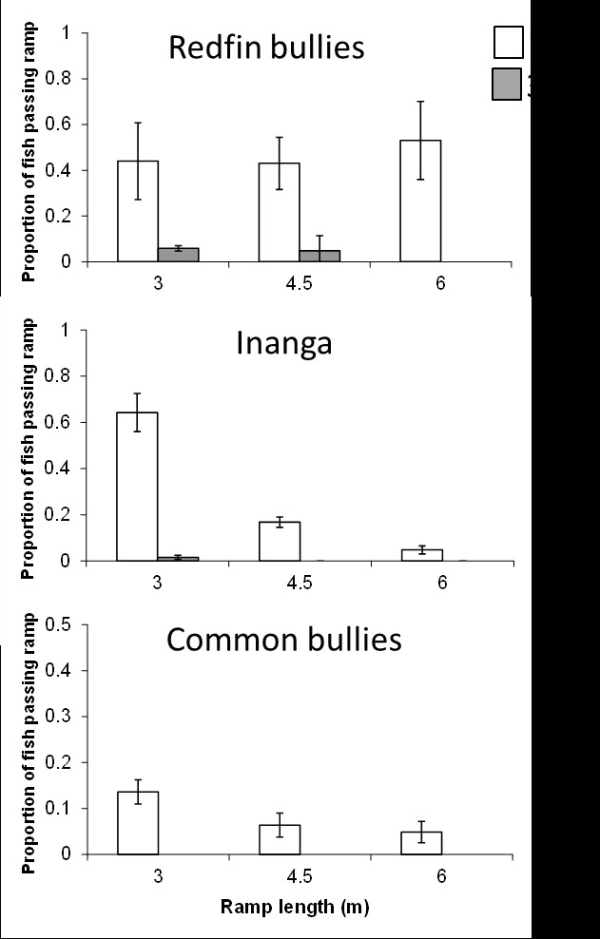One of the most common barriers encountered by juvenile fish during their upstream migration are ‘perched’ culverts. This occurs when erosion downstream of a poorly installed culvert results in a drop forming at the end of the culvert.
Our studies have shown that drops of 10 cm (or even less!) are insurmountable for some of our native fish species (Baker 2003). NIWA have, therefore, been investigating designs for ‘fish ramps’ that can be installed to allow fish to access these perched culverts.
We have been able to show that the substrate, ramp length and ramp slope all influence the number of fish that are able to pass the ramp (Figure 1). Essentially, the smoother the substrate and the longer and steeper the ramp, the more difficult it is for fish to pass (Baker & Boubee 2006; Baker 2014). These results have been used to help design fish ramps that have been successfully installed at a number of sites around New Zealand (see case study linked below for one example).
Risks with restoring fish passage
Unfortunately, one of the risks associated with restoring fish passage at instream structures is that it can also allow passage for exotic fish species that can have undesirable effects on native fish biodiversity and/or ecosystem health, e.g., trout and koi carp. NIWA staff have, therefore, been carrying out research to look at whether we can design ramps that will let our native fish past, but block the movements of exotic fish. By exploiting key traits unique to our native fish, such as their ability to climb and their small body size at migration, we have modified our ramp designs to try and maximise passage of native fish while minimising the number of exotic fish that can pass. Results from recent trials are looking positive.
Further information
Case study example: Bankwood (Kukutaruhe) Stream, Hamilton
Back to research project page (understanding fish passage in New Zealand) and references

